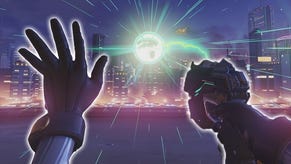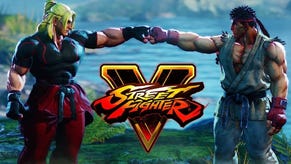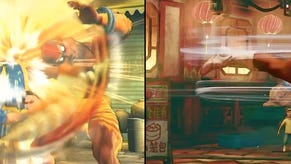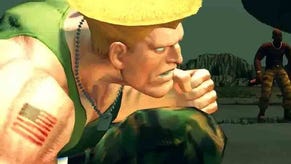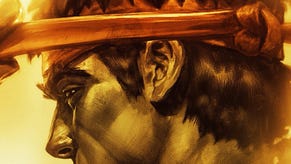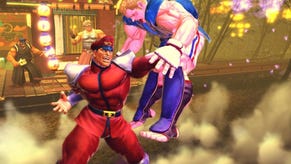How The ComboFiend went from fighting players to rebalancing Street Fighter 4
"He was like, Peter... I think you got this."
Last year, Capcom USA community manager Peter "The ComboFiend" Rosas met with those mysterious fighting game experts Capcom Japan has holed up in Osaka. This was his chance to prove himself.
"They played my co-worker, the associate producer Michael Evans," he recalls. "We all play in the office quite a bit here, and there are a lot of enthusiasts here who are pretty good - and he's one of them. So he got to play them first and he did pretty well. And he was like, Peter... I think you got this."
Against Capcom's fighting game experts - against those who for so long have built the greatest fighting game series ever - Rosas did well.
After he proved himself on that day, after that trial by fire, they accepted Rosas as one of their own: as one of the co-designers of Ultra Street Fighter 4, the new, rebalanced version of Street Fighter 4. This was not the job Rosas had signed up for, but it was the job the former fighting game tournament champion would do.
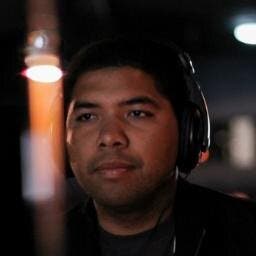
In late 2012, Rosas saw a job opening for a community manager for the fighting game brand at Capcom USA and went for it. During the interview, Capcom managers and Rosas discussed fighting game philosophy, chatted about the role and the work that would need to be done with the community. All went well, and Rosas got the gig. He packed up his bags at his home in Los Angeles and flew the 320 miles to the San Francisco Bay Area. It all happened very quickly.
At the time it was clear: the job was a community position. That was fine. Rosas tells me, "if there's one thing I like it's the community". As a veteran fighting game tournament player he was used to travelling, knew the fighting game scene intimately and had established relationships with tournament organisers.
"Honestly, I came in here thinking, let me work on these YouTube videos, content for Capcom Unity, interact with the fans and answer their questions," Rosas says. "I felt that was going to be my primary role as soon as I walked in the door."
And it was - at the start. In early 2013 Rosas worked on YouTube videos that explained how Street Fighter x Tekken had changed for its upcoming 2013 version, as expected. But then Rosas was asked to collect feedback from players of Street Fighter on how it might be improved for the planned Ultra version. He thought he'd be done with that work in May. It wasn't until early June that things changed for Rosas in an official capacity, when Capcom managers came calling. "They were like, Peter, let's have a chat..."
Ultra Street Fighter 4 is for some yet another needless iteration of a video game that Capcom has milked to the point of extinction, but to others, to some legacy players, it's a long-awaited rebalance that will revitalise the game - and its community. Nobody disputes Street Fighter 4's underlying quality. It is, quite rightly, considered one of the greatest fighting games of all time, but it has always had its problems. This is where Ultra, and Rosas, come in.
The feedback has come thick and fast and from two fronts: the west and the east. Rosas gathers feedback from western players, those who play in North American tournaments and those who watch them, and analyses it. "People are just throwing darts at a board," Rosas says, grinning. "They just want their character to be super powered. Everybody wants to be a champion, right? The easiest way you can get there..."
The sheer volume of feedback is overwhelming. Hundreds of pages of recommendations, thoughts, ideas, no-nos and you-have-tos have been read and digested. Regular location tests, while valuable for Rosas, just add fuel to the feedback fire. It comes through Twitter, Facebook, on the Capcom Unity website, and, sometimes, into Rosas' personal email inbox.
"I don't know how they got it!" he says. "People have been yelling at me from across the street. I was at a restaurant and some guy was like, hey Peter, buff Honda some more! I was like, where did he come from?"
All the while, Capcom Japan is gathering feedback of its own. Then, there is a back and forth, a discussion, sometimes heated, about what's best for the game. Then, another build, another location test, and more feedback.
"If you watch a lot of the higher-level players, they can pretty much dominate the game off one knockdown and you just watch and die."
Rosas has a fighting game philosophy that's guided him throughout the development of Ultra, but while it's helping to steer the game in the right direction, it's sometimes led to a... difference of opinion with Capcom Japan.
"We have meetings," Rosas says with the strain of someone who has had many, many meetings with people who exist in a time zone half the world away.
"In Japan they play a different style of Street Fighter. In Japan they've learned how to play the one-player game, where they learn all these set-ups, the frame advantage and they have a real scientific approach to the game. At the expert level they learn to the point where it's in essence a one-player game. If you watch a lot of the higher-level players, they can pretty much dominate the game off one knockdown and you just watch and die."
Rosas provides an example: during a recent episode of ESGN's $25,000 Fight Night series, which stars many of the world's best Street Fighter 4 players, the UK's Ryan Hart, who plays as Sagat, was comprehensively beaten by Japanese player Tokido, who plays as the set-up (or vortex) heavy Akuma. Tokido, one of the strongest Street Fighter players in the world, delivered a masterclass. For the unfortunate Hart, "he got knocked down once and you just get up at that point." You can see the match in the video above.
In the west, people play Street Fighter differently, Rosas suggests. "There's been a higher emphasis on the human element. People want to play against the person. They use the tools in the game, but how do you outsmart the guy? How do you constantly best your opponent? And how do you let them know you are indeed the superior fighter? That's always been the idea in the west."
You might expect resistance to this "human element" from the Japanese, but Rosas has encountered scepticism from all sides.
"There are definitely a lot of people who think they know Street Fighter," he says. "I get a lot of messages from them. There are a lot of theory fighters out there, but you have to take into account the human element and how a match would actually go.
"You could say something might be too strong and in theory something might be broken, but if you have to play someone you have to take the human element into account, the human error, pressure, the emotions, all of that that goes into a match. If you played a robot then maybe some of that stuff might be too strong, but being a tournament player for so many years and travelling around and seeing what Street Fighter is, sometimes my approach is, take a risk, put some of the more awesome stuff in there.
"And sometimes that doesn't mesh with the ideas that Japan might have."
Marrying the eastern and western fighting game philosophies is at the heart of everything Ultra Street Fighter 4 hopes to be, but to achieve that happy union, Rosas has had to work hard to get his Japanese colleagues to understand the "human element". There are... challenges.
"It's interesting," he says. "The first thing is the communication barrier. I don't speak Japanese at all, but I do have an excellent associate producer here that works with me and he speaks Japanese perfectly, and he always gets my ideas across.
"Another issue was that sometimes the guys over there in Japan, they focus on something and they have a bit of tunnel vision, they get a bit myopic, but as long as they understand where I'm coming from, we generally hash it out."
"They thought, okay, this guy's a community manager. What kind of input should he have on a fighting game? It was a little rocky in the beginning."
The western fighting game community holds Rosas in the highest regard. The veteran tournament player is known for mastering multiple fighting games, including Marvel vs. Capcom, Street Fighter and Capcom vs. SNK, for using characters others dismiss, and employing a crowd-pleasing aggressive, rushdown style of play. Oh, and has a reputation for spectacular comebacks. In short, Rosas knows his stuff.
But when he first started working to rebalance Ultra, those doing the same in Japan didn't know him at all. "They thought, okay, this guy's a community manager. What kind of input should he have on a fighting game?" Rosas says. "It was a little rocky in the beginning."
I've often wondered who actually makes Street Fighter, imagining baggy-eyed, sagging husks tied to desks in some artificially lit underground lair, forever tweaking frame data and adjusting damage output in infinitely scrolling spreadsheets. They go about their business unseen and unknown. We press rarely get a glimpse behind the Street Fighter curtain. It's left to producer Yoshinori Ono to shoulder the responsibility of promoting the game across the globe, but I know he's not the one doing the heavy lifting. I mean, I've played the guy at Street Fighter, and I'm no good.
"The guys I talk to are guys who are well versed in fighting games," Rosas reveals. One is a former champion of the Super Battle Opera fighting game tournament - the most prestigious in Japan. Another is the brother of one of Japan's most prominent players. And there are others who are "fairly knowledgeable about the game".
"They work together and form their thoughts and then they present them to me," he says. "And I do the same on my end. I talk to the guys here. We discuss, is this too strong? How would this affect the game? I'm the one who has to bring it all together and ask, how would this really play out in a real match? And the guys in Japan do the same thing.
"Those guys, you might not know them but they're very knowledgeable about Japan's play style and what the Japanese players would like to see."
For Rosas, the only way to earn their respect was to play them at their own game. He performed well, using multiple characters to show off his skills. "I would say now we have a mutual understanding," he smirks.
"Will this guy get up 11 frames later? It's a 50/50 all the time."
Ultra Street Fighter 4 grabs headlines for the addition of five new characters to the already bulging roster and for rebalancing the established tiers (the likes of Guile and M. Bison - even Dan - should be better able to compete now), but for veteran players it's the changes to the gameplay that are of most interest. Here, Capcom made a great deal of noise about the new Red Focus and Double Ultra mechanics, but it is the "delayed wake-up", which has gone under the radar, that Rosas singles out as having the greatest impact.
In current versions of Street Fighter, characters take a set amount of time to recover from being knocked down. Armed with this knowledge, advanced players such as Tokido can dominate with relentless set-ups. Dominate too often, perhaps. In Ultra, players can choose to delay their recovery time slightly, keeping their opponent guessing. The hope is that established set-ups will be torn up and the famous vortex will be cleared as players have to predict what their knocked-down opponent will do next.
The delayed wake-up mechanic came about because players wanted Capcom to sort out the long-running "unblockables" issue (this is explained in the video above). Rosas wanted to solve the root of the problem, which Japan agreed to, and he has, but the solution went further: it resulted in delayed wake-up.
"Japan really likes what they call set play," Rosas says. "They know exactly when they're going to get up. They learn frames by whiffing moves on your wake-up. They have all kinds of awesome set-ups. The guy who won Evolution last year, Xian, he had all kinds of awesome set-ups with Gen."
Rosas calls Street Fighter 4 a "knockdown-heavy game that results in a KO if you play correctly". Delayed wake-up should change all that. "Will this guy get up 11 frames later? It's a 50/50 all the time: on a soft knockdown they're going to get up quickly or at normal speed, on a hard knockdown they're either going to get up at normal speed or 11 frames later with delayed wakeup." It all ties into Rosas' human element concept.
"And this also makes it so that there's a higher emphasis on the standing game," he continues. "So when you play somebody who has a better fundamental game, where they play footsies, I think those guys will do a lot better this time around because there's less emphasis on the knockdown."
Peter Rosas joined Capcom shortly after competing in the 2012 Evo games. There, he finished a respectable fourth in the Marvel vs. Capcom 3 tournament, using a She-Hulk/Taskmaster/Spencer team combination. It was his final Evo as a player.
"When I first started here I did miss playing in tournaments," he says, wistfully. "I was going through withdrawals. My second day here I had a meeting in which I was told from the top, 'You're done. No more tournaments for you. You're out of the fighting game scene. You'll deal with it in another capacity but not as a player any more. You're transitioning from that.'
"That's something I did for 16 years. To just pull that away from me, that took a little bit of time to recover from. But now it's been a year I've got used to it. I've accustomed to my different role. Seeing the delight on people's faces at these location tests and seeing their positive responses to their character changing that only a person who participated in the fighting game scene to their level would understand, that's actually been much more beneficial thus far."
When Rosas announced he had joined Capcom he mentioned a wider mission to promote fighting games as best he could. This mission is ongoing, and will continue even after Ultra releases this summer.
But it's a difficult - some say impossible - mission that Capcom has for years struggled with. Fighting games are by their nature complex, and demand a dexterity from players most other types of games do not. They're just really hard - something Rosas admits.
Making fighting games more accessible is something Capcom is looking at, but it's a tricky, thorny subject among the fighting game community. It's perhaps more useful at this stage for Rosas to try to help people understand how Ultra works as it does now, before worrying about answering the bigger, wider questions than Capcom may want - or need - to ask with the inevitable Street Fighter 5.
"There are places you can go to for information, but it's a lot of searching and digging. It's hard," Rosas says. "Sometimes some of these forums aren't the most welcoming. Sometimes you don't have a lot of time and you don't want to sift through 45 sub-forums to get to your one character to find a strategy.
"The best way to do that is to make a quick YouTube video detailing that, because people just want quick digestible content these days. That way they will pick up the thought process that much faster on how to play effectively and they'll stick around."
More YouTube videos then, are down the line. But for now, in the crucial few months before Ultra's release, the feedback keeps coming, and Rosas' work on rebalancing Street Fighter 4 continues. Whether you think the game needs it or not, speaking to Rosas at length it's clear he feels it is necessary work. "This stemmed from the fans wanting more," he says. "They wanted a rebalance. They called for this. And we wanted to heed that call." Perhaps, then, it is time for Street Fighter, like The ComboFiend, to make yet another comeback.







